I had a great opportunity to interview Christian Dimmer, a space / environment designer who is teaching Urbanism at Waseda University. He has been living in Tokyo for over 15 years to understand Japanese Urbanism, and involving himself in a range of different projects.
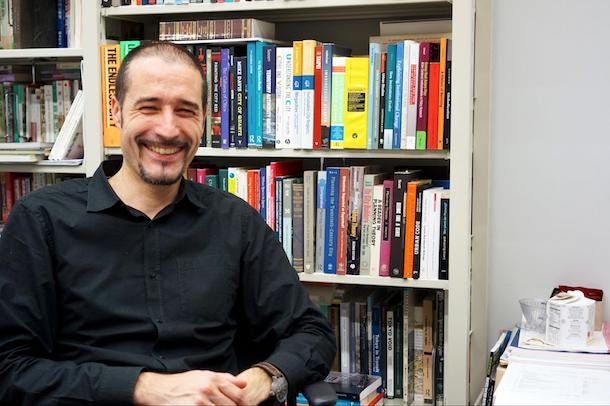 In Dima’s office at Waseda University. On the book shelves there were many books on cities, maps and plans.
In Dima’s office at Waseda University. On the book shelves there were many books on cities, maps and plans.
Thank you very much for your time. First of all, please introduce yourself and what you’re currently doing.
Dimmer: Using Japan as a base, I have taught at the University of Tokyo and Waseda University for the past 15 years. As space and environment designer, we conduct research on Urban Studies with the theme of public space and city movement. Until recently, I had been mainly involved with the academic side, but since the Tohoku Earthquake in March 2011 a big opportunity came along for me to get involved to understand the changes in society. I‘ve been involved in Tokyo-based architectural office Frontoffice Tokyo, and Tohoku Planning Forum, a project run by an international organization Architecture For Humanity.
 On the “Tohoku Planning Forum” website, you can check detailed information on who is doing what on the restoration in the Tohoku region using an interactive map.
On the “Tohoku Planning Forum” website, you can check detailed information on who is doing what on the restoration in the Tohoku region using an interactive map.
Please tell me more about the events after the earthquake.What’s the goal of Tohoku Planning Forum?
Dimmer: As a designer, architect, urban planning expert, citizen mediator, facilitator, we’ve been coming up with ideas for forums and events. This has allowed the local citizens and specialists to discuss the restorations plans.
Architects are familiar with their areas, but it often ends there. City planners, engineers and artists are also the same — they communicate amongst themselves and not with other specialists.
Also there is still hierarchy in the field of city planning and architecture. Even if you do a talk event, people will say, “Oh, that great teacher will come.” When organizing these events I was very conscious about removing the hierarchy and letting anyone speak their opinion.
By doing so, I think that will increase the number of, ‘Citizen Urbanist’.
I am also currently planning on an art project using containers. The idea is to have a moveable exhibition that can go around the Tohoku region, but I’ll talk about this later on.

Urbanism is not boring.
You used the word facilitator to explain about your work. As a facilitator, it is important to involve a range of people from new and different industries.
Dimmer: That’s right, I think “translation”is what connects people.
Could you explain more what you mean by translation?
Dimmer: As an example, I often think of “translating city planning”. The material of the urban master plans in Japan look very boring and very hard to understand. If you have a network with creators, I think that you can “translate” these boring plans into more attractive things while creating a relationship between the specialists and the artists to get citizens involved a plan that is, ‘readable’ and ‘understandable’.
 I was able to look at Dima’s planning of Shibuya that was published in 1996, it was easy to read even for non-specialists and the mapping was very attractive. Dima said, he was able to do this easily a long time ago but that skill seemed to disappear over time.
I was able to look at Dima’s planning of Shibuya that was published in 1996, it was easy to read even for non-specialists and the mapping was very attractive. Dima said, he was able to do this easily a long time ago but that skill seemed to disappear over time.
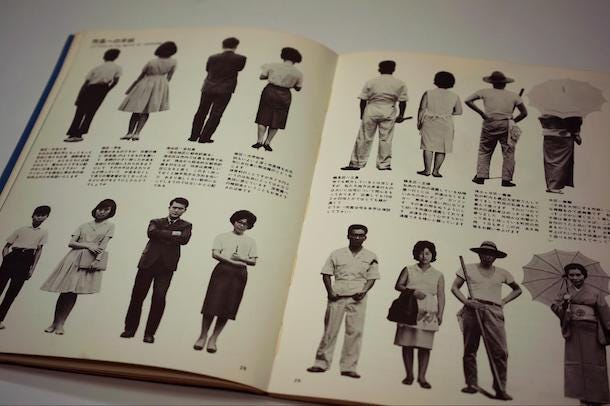 In addition to bird’s-eye views, the booklet also refers to urban dwellers in the area.
In addition to bird’s-eye views, the booklet also refers to urban dwellers in the area.
I see. I was very satisfied with the word “translation” in the context of the city. There are a number of projects that connect the specialists and citizens, and one of my favorite one is called Shibuya Hack Project. It focuses on connecting people from a range of different areas and local stake holders.
Dimmer: This is a very important activity. We did something similar at Tokyo Transitions in 2015. I feel these activities will increase the number of Citizen Urbanist.
A focus on connecting person to person — Transition Design
Would you please tell me a little more about ‘Tokyo Transitions?’ Was your main focus on connecting person to person?
Dimmer: Transition Design is a new area, recently Carnegie Mellon University in Pittsburgh has made a program using this name. The climate is changing and the politics are unstable, I feel we are living in a period of ‘transition.’ In South East Asia and Africa a Neoliberal market is taking over the local markets and the refugees are crossing the Mediterranean. In this day of age, are the specialists and policymakers who don’t pay attention to these transitions allowed to make decisions on these grand designs?
 Tokyo transition (Spring 2015) was a week-long project aimed at everyone who lived in the city. The aim was to portray what the city planners, facilitators and community were doing. ‘place/making’ photo by Egami Kenichiro.
Tokyo transition (Spring 2015) was a week-long project aimed at everyone who lived in the city. The aim was to portray what the city planners, facilitators and community were doing. ‘place/making’ photo by Egami Kenichiro.
Based on ‘transition design,’ last year we recruited people domestically and undergoing the program, ‘Tokyo transitions.’ We walked around the city did talk about events and workshops for a week inviting artists and administrators and not just specialists. A day may look like, discussions at midday based on a particular theme at the talk event and then walk around Minami-Senju and Muko island. It is similar to what the secret club did for the ‘Shibuya Hack Project,’ but for this project, we used the secret messages to help us communicate with the locals and see the hidden spots we’ve missed in the area. From the information gathered we were able to create a mapping, do an exhibition and was able to do a big discussion.
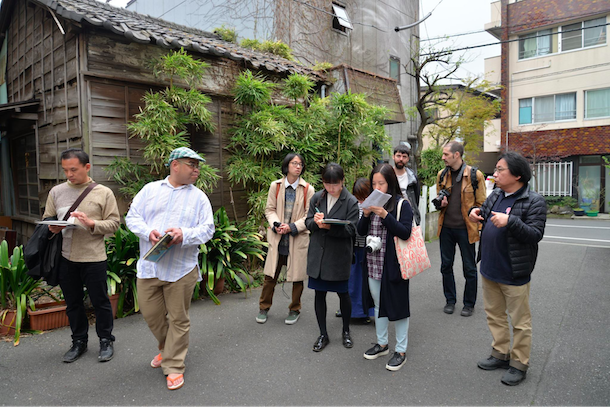 For Tokyo Transitions, we will be doing city walking, mapping, forums and three exhibitions. The people involved won’t be just specialists by local artists and administrators. ‘Place/making,’ photo by Egami Kennichiro.
For Tokyo Transitions, we will be doing city walking, mapping, forums and three exhibitions. The people involved won’t be just specialists by local artists and administrators. ‘Place/making,’ photo by Egami Kennichiro.
The era when small experts make cities is over. Economists, psychologists, graphic designers, and citizens should collaborate with architects and planners to think of a design. The difficult part is specialists prefer specialists and they are creating a wall in their region to protect themselves.
That’s right. Many of the events can not be explained by just one particular field. You talked about facilitation, for an event like Tokyo Transitions the key seems to be creating connection across a range of fields.
Working towards the three ‘translations’
Dimmer: The way we are going to connect person to person is going to depend on who we connect with who. Therefore what I think is going to be important is a translator. A translator is going to be the key to this concept and there are 3 reasons why.
First, like I’ve said, the bridge between specialists such as architects and city planners is going to be translators. Usually we don’t really think about it architects are architectures, geographers are maps, businesses are businesses, I think specialists keep to themselves in their own area of expertise. What we need is current of age is interdisciplinary, a flexible collaboration between different specialists.
Second, translating among languages and cultures. Obviously it is important to overcome the difference in language but especially in Japan where the ‘top’ city planners, architects or developers are waiting for an answer from the West. Without ignoring it, instead of just copying and pasting the example of the West, I think it is important to combine the flexible application with the Japanese context.
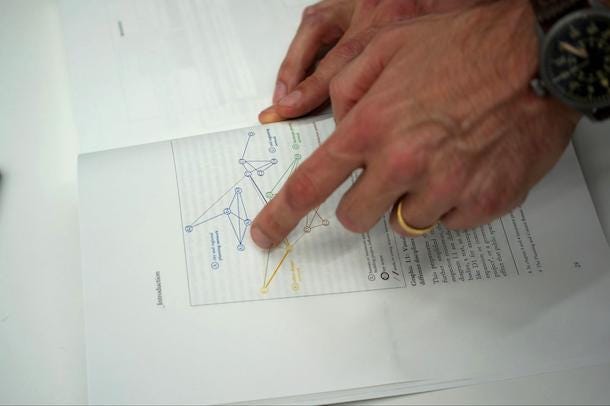 Through translation he is trying to connect regional actors, and facilitating the importance of networking.
Through translation he is trying to connect regional actors, and facilitating the importance of networking.
The third is a bridge between translation of the citizen’s community and specialists. Using difficult languages, designs and maps is a way of losing the locals, in order to increase Urbanist citizens is simplify and make the design and arts created by specialists accessible, this is something loft work is good at.
”New Urban Commons”
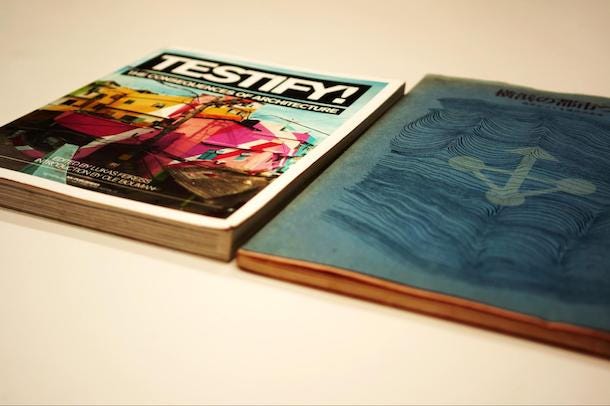
I understand the concept of translation, it is truly something embodied by Tokyo Transitions.
Dimmer: That’s right. On the last day of Tokyo Transition, Mr. Terai from Mad City and Mr. Itou from Shibaura House did the talks. Listening to the involvement of these people really gets me motivated. Telling people what to do, or this is the right way will not motivate people to take action. instead, listening to success stories I feel will create more of an impact.
For example, Mr. Ito of Shibaura House, he was the one that changed a typical advertisement company into something new, and I think his road to success was full of failures, trial and errors. I think the story told by Mr.Ito will reach out to people at a personal level, be encouraging and an inspiration.
I’ve also read your paper on ‘new urban commons’. Could you explain a bit more about it?
Dimmer There is a concept called “commons”. It is a shared resource that everyone can access, and many discussions are done in social relations. In Japanese it is translated as iriai, but what I’m interested in the new area is, ‘new urban commons.’ For example, Shibaura House or where I’m living (Kankan forest) there are new communities around.
What is distinctive about such urban new commons is that it is more open, unlike the traditional old closed community. It is necessary practice amongst new people coming and going. Shibaura House and Kankan forest communities are constantly evolving and performing, this won’t end and there is not final picture.
"Practice" is a perfect word to describe the commons, I think.
Dimmer: Yes it is. Commons and communities wasn’t statically built. It was practiced, the point that is changes may be a better verb. The important part is updating inner community, values and rules and continuously being new and dynamic. If this flow ends then the commons will die out.
Based on what we talked about what do you think is important for the cities in Japan? You being post growth society and doing lectures on building a place post Tohoku Earth quake.
Dimmer: I think we are heading toward a positive direction in terms of, ‘new urban commons,’ from new places being born like Shibaura House and Kankan forest. I am looking forward to the increasing strength of urban life, consideration towards the environment, DIY and share mentality in Japan which will create, new urban commons. However as stated, common is a living thing, through communication and workshops I feel we will need to continue these collaborative activities.
Thank you so much for sharing your ideas today!
Christian Dimmer
Assistant professor of the international education department at Waseda University/ Space and Environment designer, urban researcher.
(※This article was originally posted on layout.net. Interview / Text are by myself)


